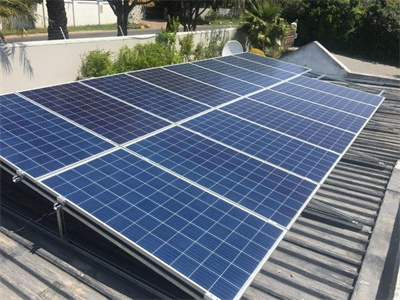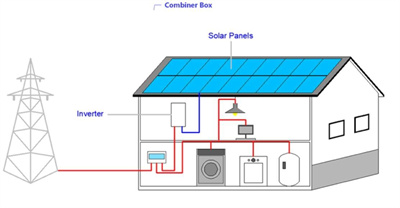IntroductionThe world is witnessing a significant shift towards renewable energy sources, and solar power has emerged as a leading contender in the quest for clean and sustainable electricity. Solar energy offers immense potential to meet our growing energy needs while minimizing environmental impact. In this blog post, we will delve into the details of a 100 kW 3-phase solar power system and explore its benefits, components, and its role in shaping a greener future.
Understanding a 100 kW 3-Phase Solar Power System
A 100 kW 3-phase solar power system refers to a photovoltaic (PV) system that has the capacity to generate 100 kilowatts of electricity using solar panels. The "3-phase" aspect signifies that the system operates on a three-phase electrical grid, which is commonly used for commercial and industrial applications. This system size is ideal for medium to large-scale installations, such as businesses, factories, educational institutions, or residential complexes.
Components of a 100 kW 3-Phase Solar Power SystemSolar Panels: The heart of any solar power system, solar panels convert sunlight into direct current (DC) electricity through the photovoltaic effect. These panels consist of multiple interconnected solar cells made of semiconductor materials, such as silicon.

Inverter: The DC electricity produced by the solar panels needs to be converted into alternating current (AC) to be compatible with the electrical grid. Inverters perform this crucial task by converting the DC power into AC power.
Mounting Structure: Solar panels are mounted on sturdy structures, such as rooftops or ground-mounted systems, to ensure optimal sun exposure. These structures must be designed to withstand environmental factors like wind, rain, and snow.
Electrical Switchgear: A 3-phase solar power system requires electrical switchgear to control the flow of electricity between the solar system and the grid. This includes circuit breakers, surge protection devices, and other safety mechanisms.
Monitoring System: To optimize the performance of the solar power system and identify any issues promptly, a monitoring system is essential. It allows real-time monitoring of power generation, panel efficiency, and overall system health.
Benefits of a 100 kW 3-Phase Solar Power SystemClean and Renewable Energy: Solar power systems produce electricity by harnessing the sun's energy, resulting in zero greenhouse gas emissions. By adopting solar energy, businesses and institutions can significantly reduce their carbon footprint, contributing to a cleaner environment.
Cost Savings: Solar power systems help to offset electricity costs by generating power on-site. With proper installation and favorable solar conditions, a 100 kW system can generate a substantial amount of energy, leading to significant savings on utility bills over the system's lifespan.

Long-Term Investment: Solar panels have a lifespan of 25-30 years, and with proper maintenance, they can continue to generate electricity even beyond that. Investing in a solar power system offers long-term returns and can act as a hedge against rising electricity prices.
Energy Independence: By generating their own electricity, businesses and institutions can become less reliant on the electrical grid, ensuring a stable and consistent power supply. This independence provides security against power outages and reduces vulnerability to energy price fluctuations.
Positive Brand Image: Embracing solar power demonstrates a commitment to sustainability and environmental responsibility. It can enhance a company's reputation, attract environmentally conscious customers, and foster a positive brand image.
ConclusionA 100 kW 3-phase solar power system represents a significant step towards a sustainable future. It offers a multitude of benefits, ranging from cost savings and energy independence to reduced environmental impact and positive brand image. As solar technology continues to advance and costs decline, the adoption of solar power systems of this scale is becoming increasingly feasible for businesses, institutions, and communities. By embracing solar energy, we can collectively contribute to a greener and more sustainable planet.

